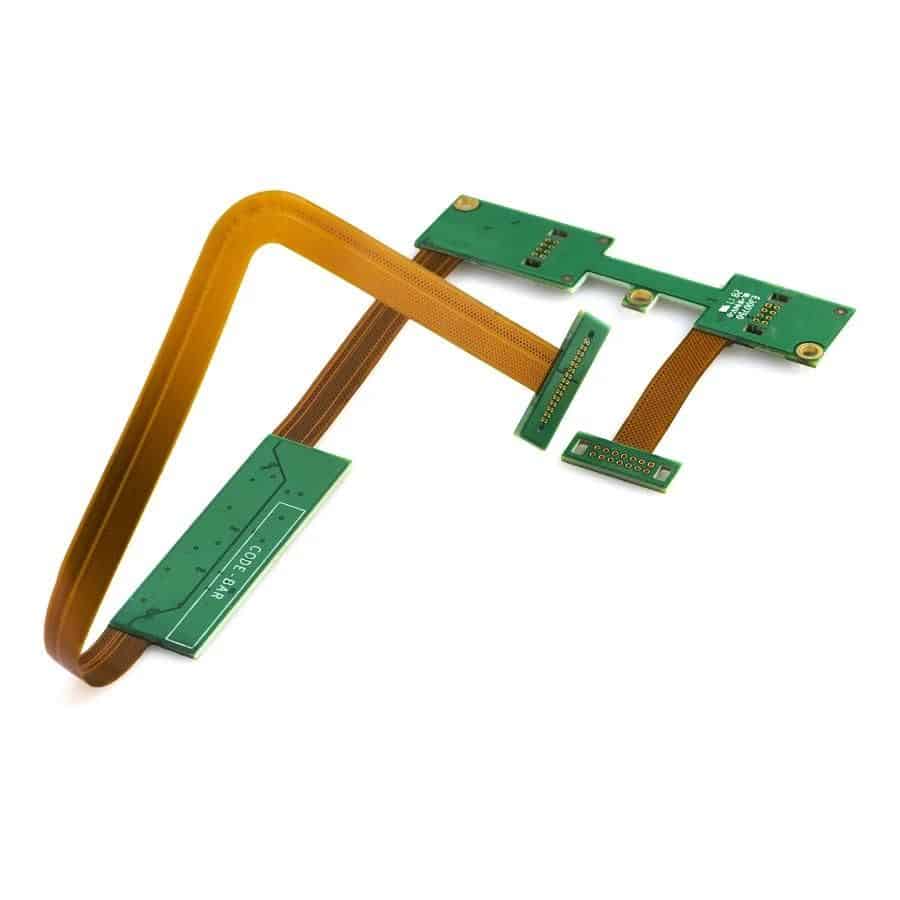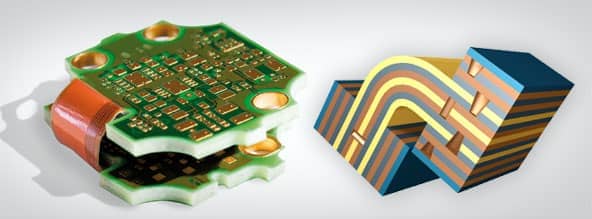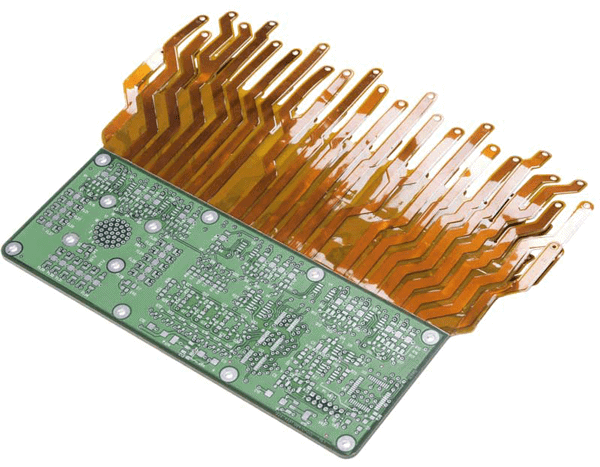The flex materials for the production of printed circuit boards are important. These include different targets for the producers. These are the performance of flex circuits on the basis of dynamic and static types. Also, premium quality control. Besides, validation from standard procedures of assembly is another criterion. Another goal is to facilitate the production process with bulk products and electronic goods.
Flexible PCB materials are reliable for producing rigid-flex and completely flexed printed circuit boards. So that these can execute their functions in different domains of the world. The flexible circuits are unmatched in their performance. These are the solutions to many technical problems as well. The factors that determine the performance of a flexible circuit are many. Among these factors, the body, prototypes, and type of assembly of a circuit board matter a lot. In this case, the appropriate type of material used for production becomes integral too.
In this post, we are going to dig deeper into the aspects of flexible printed circuit boards!
Difference between Flex and Rigid boards materials
- Material: Rigid boards are produced with the help of compounds of glass and epoxy. The flex circuits need polyamide for their production. The rare production cases would include polyimide material to make rigid circuits.
- Coverlay: The Flex printed circuit boards include two factors that are overlay which is also a flexible mask. There is a solder mask for the rigid circuit boards. Cover lays have routed openings and is also refined with the help of specially designed equipment for the procedure. A special adhesive is needed to stick the coverlay to the flex with no complications.
- Stiffeners: Flexible PCBs use different stiffeners that are SUS, FR4, and AI, to execute them on those areas that need stiffening. These need a proper amount of lamination and adhesion to attach firmly to the boards. In this case, a pressure-sensitive adhesive would be helpful. On the other hand, there is no need to use any stiffener for the rigid circuits since these can further complicate their performance by creating a negative impact on rigid circuits.
- Permittivity: The permittivity has no limit for the rigid boards, while for the flex circuits, the permittivity is only 3.4.

Benefits of Flex PCBs
Below are some prominent advantages of flex circuit boards for users:
- Lightweight: Flex circuits use a special polyimide material for their production. Its weight is much lighter than FR4 of rigid circuit boards.
- Thin: The thickness of a flex circuit is 4.4. and ranges up to 10 miles. Due to this reason, these boards are slimmer in their appearance.
- Flexible: These produce a lesser mechanical footprint because of their flexible nature, unlike rigid boards.
- High Temperature: Flex circuits comprise polyimide that is acid resistant. Deals with high temperatures more efficiently than the materials used in rigid board production.
Advantages of Choosing a Flexible PCB
There can be many benefits of giving priority to flex circuit boards over other types of circuits existing as of now. These are widely used in different sectors of the world more than any other type due to their irresistible properties for the users. Due to the progress in technology, new electronics need to be more flexible, which is only possible due to the usage of flex circuits. These can adjust to tight places, and this is why these boards are smaller in size. Offer more bendiness where it’s needed during the production process. Due to flex circuits, the electronics can be light in weight. These feature a higher degree of versatility in the performance of circuit boards as well.
Materials Use for Flexible PCB Substrates
There are some important tips to keep in mind while selecting a good material for the substrates of printed circuit boards.
Below are some viable substrate options for the flex circuits:
- Polyether ether ketone
- Polyimide
- Polytetrafluoroethylene
It is important to discuss the right polyamide type for your order with your producer company. Since the wrong polyimide can ruin the performance of the flex circuit at large, professional consultation can be helpful in this aspect. The pros of polyimide material include cost-efficient production and more reliability.
An ideal choice for heat resistance and chemical protection for users. Comes with several electrical properties that merge together to offer the fine performance of these circuits. Polyamide material is present in smartphones and other smart gadgets that are typically used in multiple households today. Another alternative to polyimide is polytetrafluoroethylene. It has a remarkable ability to regulate temperature.
It is a stable compound and reduces heat and power dissipation as much as possible. The applicable domains of this substrate can be automotive and aerospace. Polyether ether ketone is also a good option. It is reliable for its superb chemical resistance. It deals impressively with radiation as its outstanding feature.
The substrate does not get damaged due to extremely hot degrees. The utilization of this substrate is abundant in the medical sector. Since it’s a crucial part of the flex circuits, some X-ray scanners and machines also work on this substrate in different hospitals and clinics where these offer accurate medical analysis for the patients.
Cladding Components
The cladding layer is important for wrapping the flex circuit board in it. It helps in the accurate selection of the circuit parts. These parts would contribute to the desired performance of electronics by the users. This layer is for the protection of the board. Gives it more insulation as well. Ultimately it delivers persistence and more durability to the flex circuit. The best type of cladding, in this case, is copper-clad laminate.

It is a typical choice of the producers. It is remarkable in thermal regulation as well. The hot temperature cannot impact its performance at all. This helps keep the entire board intact and increases its life length.
Such features are greatly needed for the efficient performance of the electronics these are installed. The polyamide material is important to consider for its electrical characteristics. The layer is viable to absorb the moisture and humidity and increases the tear strength at the same time.
Choose Adhesive-Free in CCLs
It is better to avoid adhesives in any step of the production process of flex circuits. Since these have been discontinued by experts for many years, it is a former technique by which engineers would produce copper-clad laminates. There is a thin film made of polyimide. A connector is basically a type of adhesive. Another factor is a foil made of copper metal.
There are some benefits of using adhesives, but not in the case of flex circuit board production. The users want these circuits to be premium in electrical quality. These offer good stability that comes from adhesion. But the former electronics would be non-supportive of these. Since then, the producers have started to consider alternatives.
The best solution in this regard is the copper-clad laminate. It comes with two layers. There was an obvious impact on the assembly of these circuits ever since the producers avoided adhesives for this process. It resulted in more production costs as well.
There are three major methods for the assembly of copper-clad laminates:
- Lamination – The circuit boards that have two sides can undergo lamination easily.
- Film coating – Film coating helps when there is a need for bulk production at a larger magnitude.
- Electroplating – is the least expensive option in this aspect.
Halogen-Free Substrate
There is no doubt that polyimide material is a viable type of substrate for flex-printed circuit boards. But there is still a margin left to modify it for further improvements.
One suggestion from the stakeholders and changemakers of this sector is the liquid crystal polymer. There are different types of crystal polymer films. Producers also place a special copper foil on the upper surface.
A hot presser is another factor in producing copper-clad laminates. The aspect of LCP is important because that offers a good level of reduction of humidity. Such copper-clad laminates are useful because of their different attributes. The LCP is a reusable factor for this production.
Due to this reason, this compound is effective due to its environment-friendly nature. Printed circuits are greatly impacted by halogen compounds. The halogens were widely used in circuit boards but were soon discontinued due to the regulations of major authorities.
Other Flexible PCB Materials
The materials used for the production of printed circuits must be conductive to avoid complications. In all cases, copper foils are your safe haven if the materials are short or unavailable in the market. But it is important to know about all other materials that can be viable for this process. The viable metals in this aspect include silver, nickel, and gold. There can be some helpful alloys that offer good conductive characteristics.
There are also different types of copper foils that can be used for similar properties.
Rolled and annealed, or RA, comprises a column-like shape that gives it a leveled body. It gives a remarkable degree of flexibility. It is the main reason behind its abundant usage in flex circuits. Another type of copper file is called electro-deposit. It looks like a fish scale and regulates the firmness of the circuit board. The copper foil is useful in place of etching.
A dependable option for circuit boards that work with higher densities. There is a special paste of silver color on these boards. It offers the same amount of flexibility for the handling of different magnitudes of projects. In the same case, photosensitive polyimides are reliable in their performance.

Make a Flex-Rigid Board
It is beneficial to use both rigid and flexible production materials for the production of such boards that are rigid and flex. Polyimide is necessary for these boards. You can combine it with other materials as per your ease and availability. Make sure to select a good rigid material to cover the rigid part of this circuit board.
There are two important options to consider. These are RO4000 and RO3000. These can be merged with different types of ceramics. These offer exceptional stability on the basis of mechanical and electrical attributes. These are dependable for the satellites, radars, and other multi-layer units that are inevitable for the fine performance of radios. R04000 is impressive for its dimensional stability. It is a derivative of hydrocarbon ceramic laminate that has vast applications in different domains.
Factors to Consider While Choosing the Right Materials for Flexible PCB
The importance of the ideal production materials and design cannot be ignored. Also, the experienced producer will be the icing on the cake in this matter. The producer you are hiring must be a seasoned one. They should have the appropriate production gear. The professionals must address all the problems in your mind. These should be the right handlers for your project. Their services should be cost-efficient.

Also, their production should be fast and must never compromise the quality. Their delivery time must be shorter, which is only possible with the help of fast delivery. There are some producers that can leverage their engineers to deal with all the dimensions of the project professionally. So that their clients don’t have to worry about the technicalities of the projects, plus their products and services give equal access to their customers in an affordable manner.
Conclusion
The materials and their significance cannot be neglected for the reliability of flex printed circuits. These are the factors that can greatly impact the performance of these circuits for the users. Make sure to discuss all the important details of your projects with the company you are hiring so that there will be no complications in the process later. It is better to keep the requirements of your project’s details in mind and shortlist competent producers for consultation. It will be beneficial in the increased life length of your projects with the same durability in the longer run.
Comments are closed